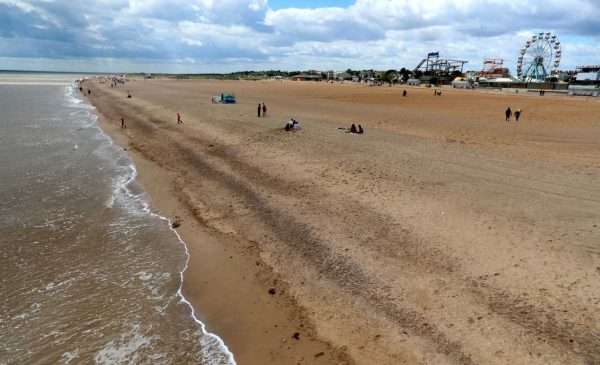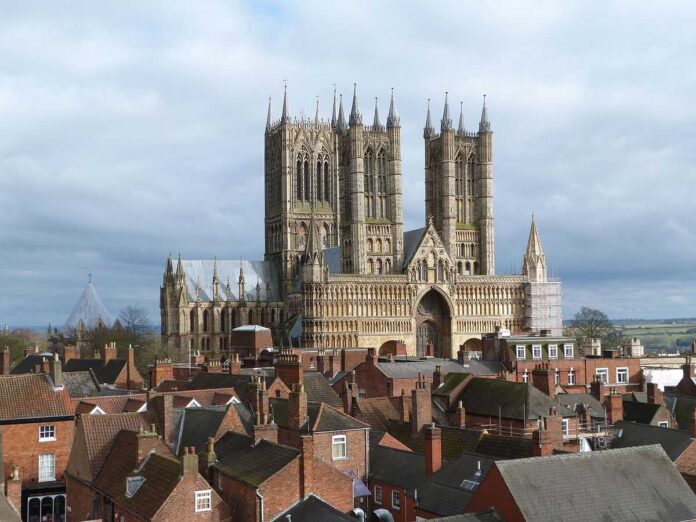About Lincolnshire: Exploring the UK’s Diverse County
From its diverse landscapes to its rich history and cultural heritage, Lincolnshire is a county that deserves recognition and exploration
About Lincolnshire
Lincolnshire, the second-largest county in the United Kingdom, is a hidden gem with a rich history, diverse landscapes, and bustling communities.
Nestled in the East Midlands region of England, Lincolnshire is often overlooked by non-locals, who are unaware of its existence or mistakenly associate it with neighbouring counties. In this comprehensive guide, we will delve into the fascinating facts and features that make Lincolnshire a truly remarkable destination.
Where is Lincolnshire?
Located in the East Midlands region of England, Lincolnshire is bordered by eight other counties: East Yorkshire, South Yorkshire, Nottinghamshire, Leicestershire, Rutland, Northamptonshire, Cambridgeshire, and Norfolk. This strategic location offers easy access to various parts of the country and contributes to Lincolnshire’s vibrant culture and economic growth. The county boasts a 50-mile coastline along its eastern edge, stretching from The Humber in the north to The Wash in the south.
Lincolnshire A County of Many Landscapes
Lincolnshire’s diverse landscape is one of its most enticing features. From sandy beaches to lush woodlands, rolling fields to scenic marshes, the county offers a wide array of natural beauty to explore. Let’s delve deeper into the distinct areas that make up Lincolnshire:
Lincolnshire Wolds: An Area of Outstanding Natural Beauty
The Lincolnshire Wolds, designated as an Area of Outstanding Natural Beauty, is a haven for nature lovers. The undulating hills and picturesque valleys create a stunning backdrop for outdoor activities such as hiking, cycling, and wildlife spotting. Birthplace to the renowned poet Alfred, Lord Tennyson, the Lincolnshire Wolds is steeped in literary history.
The Fens: A Unique Fenland Landscape
The Fens, characterized by their flat and fertile terrain, are a fascinating part of Lincolnshire’s landscape. These marshy lowlands are rich in agricultural heritage and offer a unique glimpse into the county’s past. The Fens have a unique ecosystem, providing a habitat for diverse flora and fauna.
The Marshes: Lincolnshire Coastal Beauty and Wildlife

Lincolnshire’s coastal marshes span along the county’s eastern edge, offering breathtaking views of the North Sea. These marshes are teeming with wildlife, including numerous bird species. One of the highlights is Donna Nook, where a regular seal colony flocks to the beaches every year, providing a delightful spectacle for visitors.
Lincolnshire Coastal Delights and Roman Heritage
Lincolnshire’s coastline is a haven for nature lovers and history enthusiasts alike. From the breathtaking vistas of Skegness to the regular seal colony at Donna Nook, the coastal areas of Lincolnshire offer a multitude of attractions.
The city of Lincoln, a historically significant Roman town known as Lindum Colonia, boasts the only Roman arch in Britain through which traffic is still allowed to travel. The city is also home to Lincoln Castle, built by William the Conqueror, which houses one of the four surviving copies of Magna Carta.
Lincolnshire Historical Significance and Cultural Heritage
Lincolnshire’s rich history is woven into the fabric of its towns and landmarks. The county played a significant role during World War Two, earning the nickname “Bomber County” due to its numerous airfields.
Lincoln Cathedral, a magnificent architectural masterpiece, was the tallest building in the world for 238 years and houses a library designed by Sir Christopher Wren. Lincoln Castle, with its Victorian Prison, featured in the popular television series Downton Abbey.
Lincolnshire Literary Legends and Famous Figures
Lincolnshire has been a source of inspiration for renowned literary figures and produced notable individuals who have left an indelible mark on history. Alfred, Lord Tennyson, one of the greatest Victorian poets, was born and raised in Somersby in the Lincolnshire Wolds.
Sir Isaac Newton, the father of modern physics, began formulating his Laws of Gravitation at Woolsthorpe Manor near Grantham. Margaret Thatcher, the first female Prime Minister of the United Kingdom, was born in Grantham, adding to Lincolnshire’s legacy of influential figures.

Lincolnshire Aviation Marvels and Cultural Celebrations
Lincolnshire is synonymous with aviation excellence. It is home to the iconic Red Arrows, the Royal Air Force’s aerobatic display team, and The Battle of Britain Memorial Flight, which showcases historic aircraft.
The county’s aviation heritage is celebrated annually at the Waddington Air Show, which attracts aviation enthusiasts from around the country. Lincolnshire also hosts the world-famous Burghley Horse Trials at Burghley House near Stamford, a thrilling equestrian event that captivates spectators.
Lincolnshire Quirky Traditions and Unique Attractions
In addition to its well-known landmarks and historical significance, Lincolnshire is home to a myriad of quirky traditions and unique attractions. The Lincolnshire dialect, affectionately known as Yellowbelly, adds a distinct flavour to the county’s cultural tapestry.
The Lincolnshire Poacher, an unofficial county anthem, resonates with locals and showcases the pride and heritage of the region. The Lincoln Imp, a stone carving at Lincoln Cathedral, tells the tale of a devil turned to stone by an angel, adding an element of folklore to the county’s history.
Lincolnshire Festivals
Lincolnshire embraces the spirit of celebration, hosting a range of festivals and events throughout the year. The Lincolnshire Show, which began in 1869, showcases the agricultural excellence and vibrant community spirit of the county.
Fascinating Facts About Lincolnshire
Now that we have explored the diverse landscapes of Lincolnshire, let’s dive into some intriguing facts that make this county truly special:
Lincolnshire is the second-largest county in England by area but ranks only eighteenth in terms of population, highlighting its vast open spaces and rural charm.
Lincolnshire is home to over 50 miles of coastline, boasting stunning beaches that have been awarded Blue Flag status for their cleanliness and beauty.
Lincolnshire can proudly claim to be the birthplace of one of the world’s greatest scientists, Sir Isaac Newton. Born in Woolsthorpe, Newton went on to make groundbreaking discoveries in physics and mathematics. His theory of universal gravitation, inspired by the famous falling apple incident, revolutionized our understanding of the natural world.
Stamford: The First Conservation Town. Stamford, a picturesque town in Lincolnshire, holds the distinction of being the first designated conservation area in the United Kingdom. With its wealth of historic buildings, including over 600 listed structures, Stamford is a living testament to the region’s rich architectural heritage. Its timeless charm has earned it the title of “England’s most attractive town” by poet laureate John Betjeman.
The county is renowned for its agricultural prowess, being the largest producer of potatoes, wheat, cereal, and poultry in the UK. It is also the second-largest producer of sugar beet.
Lincoln, the county’s capital, has a rich Roman history. Known as Lindum Colonia during the Roman era, Lincoln boasts the only Roman arch in Britain through which traffic is still allowed to travel.
The Magna Carta, a cornerstone of modern democracy and human rights, has its roots in Lincolnshire. It was here that Stephen Langton, a local man who later became Archbishop of Canterbury, played a pivotal role in drafting this historic document. The Magna Carta asserted principles of justice, fairness, and equality under the law.
Lincoln Castle, built by William the Conqueror, houses one of the four surviving copies of the historic Magna Carta. It also served as a filming location for the popular TV series, Downton Abbey.
Lincoln Cathedral, with its awe-inspiring architecture, is home to a library designed by the renowned architect Sir Christopher Wren. The cathedral itself held the title of the tallest building in the world for an impressive 238 years.
Lincolnshire played a significant role in World War Two, with more airfields than any other county in England. It was known as “Bomber County,” and pilots returning from raids over Germany used Lincoln Cathedral as a landmark to guide them home.
The county is proud to be the birthplace of notable figures such as former Prime Minister Margaret Thatcher and astronaut Michael Foale, the first Briton to perform a spacewalk.
Lincolnshire has strong cultural traditions, including a champion of the local dialect living in Minting, known as Farmer Wink. The county also boasts the unofficial county anthem, “The Lincolnshire Poacher.”
Bronze Age Boat Discovery. In 1886, an astonishing archaeological discovery took place in Lincolnshire. During excavation work on gas lines, workers stumbled upon a well-preserved Bronze Age boat. Dating back almost 900 years, this vessel could have carried up to 50 people and offers a fascinating glimpse into the region’s ancient maritime history.
Lincolnshire hosts a variety of exciting events and festivals, including the world-famous Burghley Horse Trials at Burghley House, the Lincolnshire Sausage Festival at Lincoln Castle, and the Lincoln Christmas Market, which attracts visitors from around the world.
The Shortest County Boundary. Lincolnshire is home to the shortest county boundary in England, measuring a mere 18 meters in length. This unusual feature can be found between Lincolnshire and Northamptonshire, adding a unique geographical quirk to the region.
Danish King Sweyn Forkbeard’s Reign. During a tumultuous period in England’s history, Danish King Sweyn Forkbeard briefly claimed the throne in Lincolnshire. Gainsborough, a town in the county, served as his base and even became England’s capital for a short time. This chapter in Lincolnshire’s past highlights its significance in shaping the nation’s political landscape.
